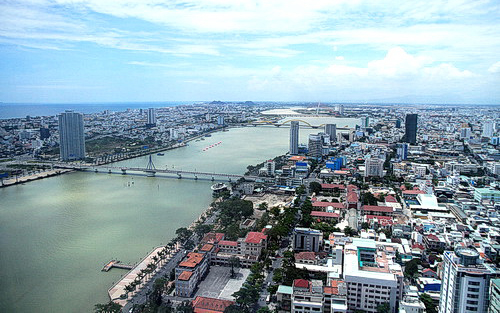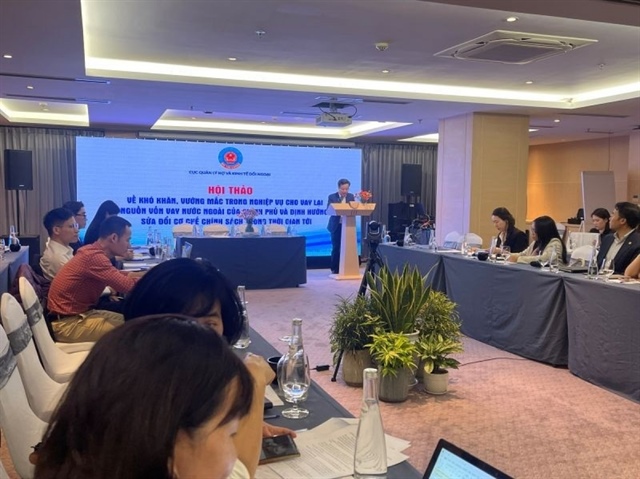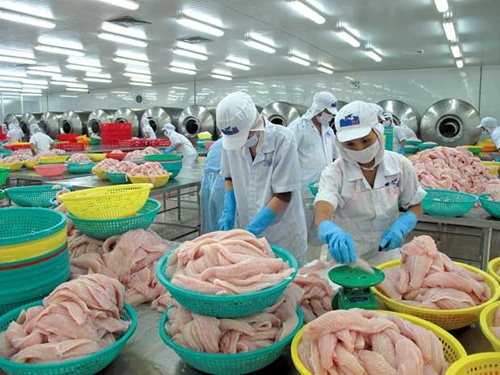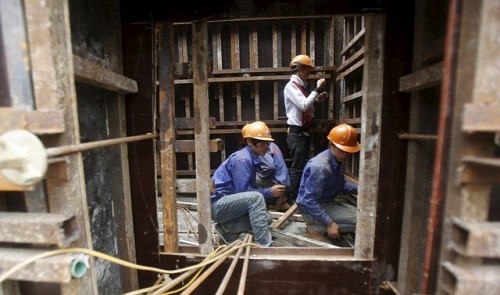Da Nang tops competitive index again
Da Nang tops competitive index again
The central city of Da Nang topped the Provincial Competitive Index (PCI) for the third consecutive year in 2015, among 63 provinces and cities nationwide.

In the PCI 2015 report jointly launched yesterday by the Viet Nam Chamber of Commerce and Industry (VCCI) and the US Agency for International Development (USAID), the city gained the top score of 68.34 points.
This marked the sixth time Da Nang has led the annual rankings since the first PCI report in 2006.The PCI 2015 was based on responses from 11,700 enterprises, which comprised 10,200 domestic private firms and 1,500 foreign invested enterprises in Viet Nam.
In yesterday's results, Da Nang was followed closely by the Mekong Delta Province of Dong Thap (66.39 points) and the northern province of Quang Ninh (65.75 points).
Both runners-up have been consistently high performers in the PCI and have also demonstrated unique innovations for streamlining local regulatory practices and enhancing the transparent evaluation of personnel involved with the local business sector.
Two other northern provinces, Vinh Phuc (62.56 points) and Lao Cai (62.32 points), were consistent top performers, rounding out the top five.
The top ten best performers in PCI 2015 also included HCM City, Thai Nguyen, Quang Nam, Long An and Thanh Hoa, which received positive assessments by domestic enterprises.
"The national competitiveness is mainly determined by economic governance and the ease of doing business in cities and provinces," said VCCI Chairman Vu Tien Loc.
Therefore, the proactivity of provincial leaders, and professionalism and effectiveness of local government officials are deciding the speed and direction of Viet Nam's development in the times to come," he said.
VCCI's Legal Affairs Department Director, Dau Anh Tuan, said that economic governance of provinces nationwide and cities continued to improve, with positive improvements seen in such areas such as business registration, access to information and administrative procedure reform.
According to PCI 2015, about 11 per cent of domestic firms planned to increase their operations after two years. Inflation-adjusted average investments rose to VND16.5 billion (US$737,000), the highest level in 10 years, and well over twice the amount recorded in 2006.
The number of firms adding employees rose to almost 12 per cent, double the record low levels of 2012. In 2015, nearly half of the firms expected to expand their businesses in the next two years, the highest increase over the past five years of the PCI report.
However, Tuan said there was continuing stagnation in the authorities' efforts to create a level playing field for private sector competition.
While most small and medium-d enterprises (SMEs) did not appear to be well-prepared to take advantage of market opportunities, they also found it difficult to get access to land, capital and regulatory information.
SMEs are also beset by obstacles like the burden of informal charges, and the poor quality of business support services that charge unreasonable prices, he said.
"The PCI programme has consistently promoted the voices of the private sector while engaging provincial governments in business environment reforms," said Ted Osius, the US Ambassador to Viet Nam.
"Efforts to improve competitiveness will be critical to Viet Nam's success and particularly to its developing a more inclusive economy," he said.
Michael Trueblood, Director of the Economic Growth and Governance Office at USAID Viet Nam, said foreign invested enterprises perceived that the country continued to have advantages over its competitors in terms of policy stability, low expropriation risk, business involvement in policy making, and a reasonable tax burden.
However, they ranked Viet Nam below its competitors with regard to informal costs, regulatory burdens, the quality of infrastructure, and public services such as healthcare and labour training.
Foreign invested firms were primarily concerned about two major types of risk, namely macroeconomic and regulatory risks that might reduce their profitability. Improving transparency was considered an important way to reduce the concerns of foreign investors.
PCI 2015 also reported that there were limited technology and labour productivity spillovers coming from the close cooperation between foreign partners and domestic businesses, especially in high tech industries.
To improve this situation, Viet Nam would benefit most from educational improvements that enhance the capacity of its labour force and the technological sophistication of domestic enterprises.
The report also showed that awareness of and support for the Trans-Pacific Partnership (TPP), the biggest trade deal ever signed by Viet Nam and 11 other Pacific rim nations last February, remained generally high among the business community.
Average awareness increased from 68 per cent in 2014 to 78 per cent in 2015, while average support increased from 62 per cent to 72 per cent. Domestic firms, however, demonstrated lower awareness of the TPP than foreign invested enterprises.
The PCI is comprised of 10 sub-indices such as entry costs, land access and transparency. It also includes time costs, informal charges and policy bias. Proactivity, business support services, labour training and legal institutions make up the 10.





















